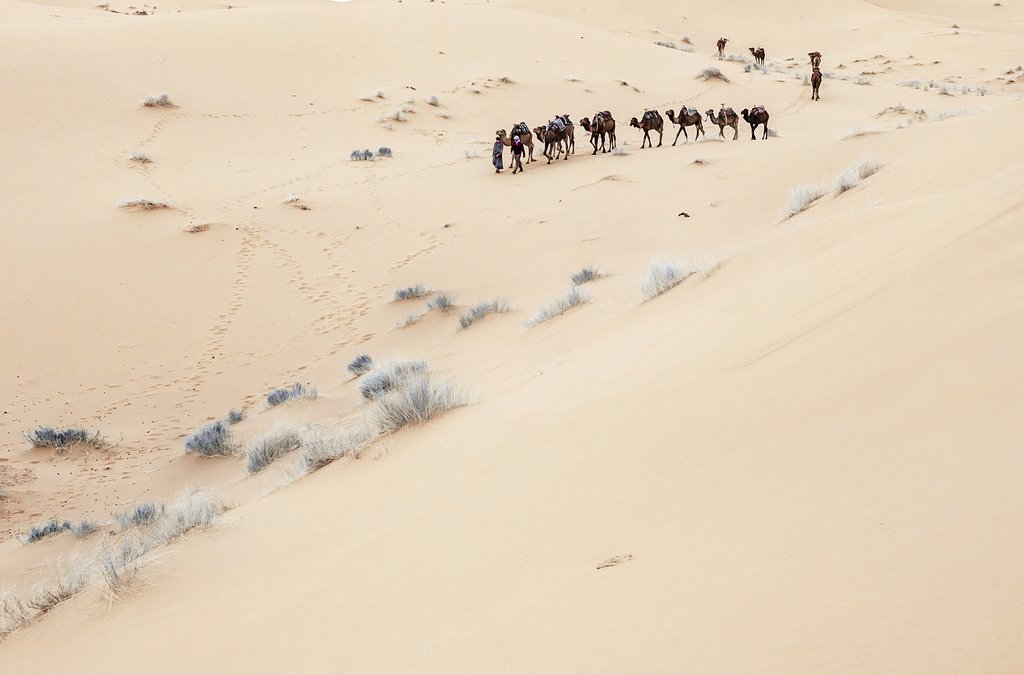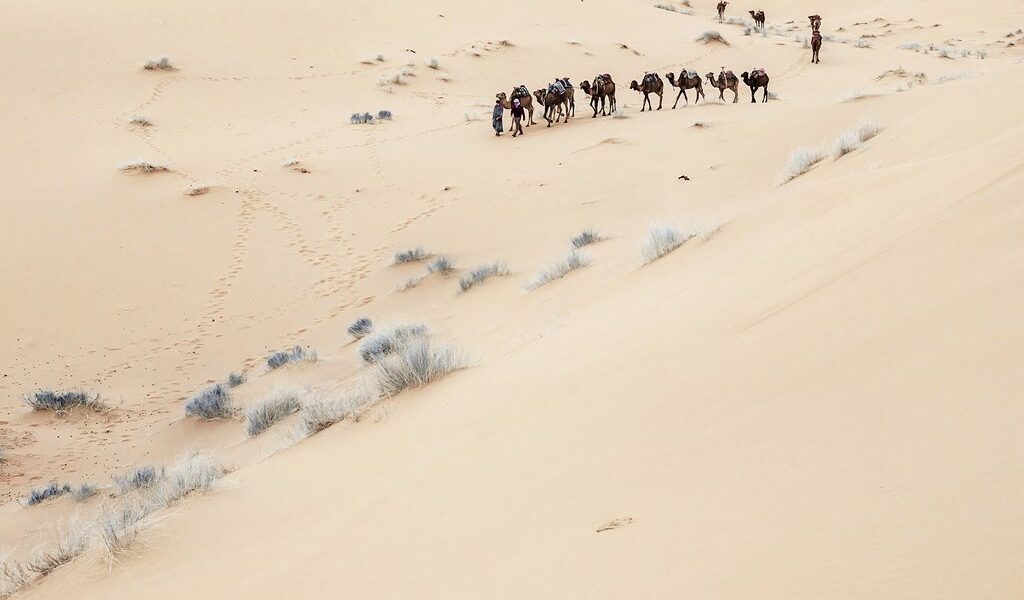
Considering a visit to the Moroccan Sahara in March? It’s a good time to go: the weather is pleasant for outdoor adventures, save for the occasional sandstorm, and you won’t encounter major crowds. Find out more about what to expect with this monthly guide to visiting the Sahara in Morocco in early spring.
In Morocco, within the expansive embrace of the Sahara Desert’s northwest region, the month of March serves as a gentle bridge, transitioning from the cooler days of winter into the burgeoning warmth of spring. While the nearby High Atlas mountain range may still experience the occasional snowfall and lingering cold temperatures, the desert itself generally enjoys comfortable weather conditions during this period. Travelers can anticipate daytime highs reaching the upper 60s Fahrenheit, while nighttime lows typically settle in the lower 40s.
It’s worth noting that March, in comparison to the sun-drenched days of February, tends to experience a greater prevalence of cloudy skies. There’s also a slightly elevated chance of encountering rainfall, and, although less frequent, the possibility of a sandstorm should be considered. While you might not be guaranteed a picture-perfect sunset illuminating the dunes every evening, you can generally expect favorable weather for engaging in a variety of outdoor activities throughout the daylight hours. Furthermore, with the gradual increase in temperatures that accompanies the arrival of spring, there’s less of a need to burden yourself with excessively heavy winter clothing for the evenings.
The peak season for tourism in Morocco typically occurs later in the year. This makes March a particularly opportune time to schedule a visit, as you’ll be able to avoid the large crowds of tourists that often descend upon popular destinations during peak season. You also won’t need to worry about making excursion bookings months in advance. Additionally, the temperatures are more moderate and the prices tend to be more reasonable. However, it’s essential to remember that any form of travel within the desert environment can present logistical challenges, so meticulous planning of your itinerary is always recommended, especially if you’re interested in camping under the stars.
The pleasant weather and the absence of overwhelming crowds in March make it a fantastic time to pursue any kind of outdoor adventure in the Moroccan Sahara. Consider embarking on hikes across the mesmerizing dunes, enjoying leisurely camel rides, or immersing yourself in the breathtaking beauty of the night sky while gathered around an open fire. Visits to the various desert towns also offer unique cultural experiences.
A particularly noteworthy event that occurs during this time of year is the International Nomads Festival, which takes place in and around the remote oasis village of M’Hamid El Ghizlane. This three-day celebration features captivating displays of music, art, and traditional cuisine, making it a compelling reason to plan your trip around this unique cultural event. Not only does a visit to M’Hamid offer a glimpse into the local culture, it also serves as a jumping-off point for a Jeep adventure to Erg Chigaga, an expansive “sand sea” that’s sure to leave a lasting impression. If you’re looking for an unforgettable experience, consider camping here, but remember to make arrangements well in advance.
The International Nomads Festival, a three-day open-air event held in the oasis village of M’Hamid El Ghizlane, typically occurs from mid-March to early April. The festival showcases the rich cultural heritage of the Sahara’s nomadic communities through music, dance, crafts, and poetry. Be sure to consult the event’s website for the precise dates, as the festival is generally scheduled for the latter part of March or the beginning of April.
Dates will vary for Ramadan, during which Muslims observe a fast from dawn until sunset.
Consider these itineraries for a well-rounded trip. The Moroccan Highlights: Fes, the Sahara Desert, & Marrakech – 6 Days offers a whirlwind tour of Morocco’s most iconic destinations, including Fes, the Sahara Desert, and Marrakech. Alternatively, the Marrakech & Grand Tour of the Sahara Desert – 6 Days, allows you to explore the majestic peaks of the High Atlas mountains and the seemingly endless sandy landscapes of the Sahara. Finally, for a more comprehensive experience, the Morocco’s Imperial Cities & the Sahara Desert – 13 Days itinerary offers the opportunity to visit Casablanca, Fes, Essaouira, the Erg Chebbi Dunes, and other notable locations, providing a well-rounded exploration of Morocco’s diverse attractions.
Word Count: 637
B-1624

